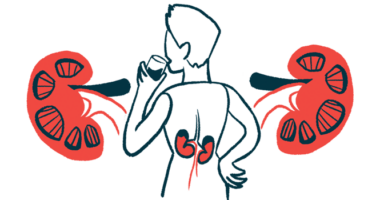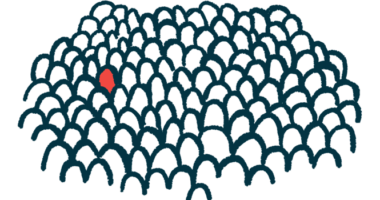Soliris benefits half of children with aHUS after stem cell transplant
7 children who took therapy saw their disease-associated biomarkers normalize

Treatment with Soliris (eculizumab) helped about half of the children diagnosed with atypical hemolytic uremic syndrome (aHUS) after they received a stem cell transplant, according to a small study.
Among 13 patients who started taking Soliris, seven survived and saw their disease-associated biomarkers normalize. Six died due to complications related to the stem cell transplant.
The study, “Eculizumab treatment in paediatric patients diagnosed with aHUS after haematopoietic stem cell transplantation: a HSCT-TMA case series from Japanese aHUS post-marketing surveillance,” was published in Bone Marrow Transplantation. The analysis was sponsored by Alexion, now a part of AstraZeneca Rare Disease, which developed Soliris.
aHUS is a type of thrombotic microangiopathy (TMA), a group of diseases wherein blood clots form in small blood vessels. In aHUS, this is caused by abnormal activity of the immune system’s complement cascade. While there are often genetic factors, another trigger is typically needed for symptoms to manifest.
Complications from stem cell transplant, immune response
One such trigger can be a hematopoietic stem cell transplant (HSCT), which is used to treat a range of blood and autoimmune disorders. It involves transplanting blood cell precursors into a patient to help repopulate their body with healthy blood cells.
Certain immune complications can occur that drive TMA symptoms, however, especially in people with underlying genetic risk factors. TMA is associated with high mortality rates after a stem cell transplant and the appropriate treatment strategy remains to be established. Soliris is approved for aHUS and other complement-mediated diseases, and inhibits the C5 protein to prevent the complement cascade’s activation, potentially making it an appropriate treatment for managing HSCT-TMA.
Here, scientists retrospectively analyzed clinical data from 13 pediatric patients in Japan who received Soliris after being diagnosed with aHUS following an HSCT procedure, which was intended to treat various forms of cancer or immune system diseases. TMA symptoms emerged about a month later, on average.
Three children had existing risk factors for aHUS, including a history or family history of TMA. Eleven patients had complications from the procedure that could have caused the complement cascade to overact, according to the scientists.
All the children were treated with other therapies before starting Soliris, which was initiated a median of 16 days after the onset of TMA. Soliris was infused into the vein, or intravenously, in a similar regimen as that approved for aHUS, with patients receiving a median of three doses.
Over a median observation period of nearly six months, seven patients survived, leading to a predicted survival of 53.8% six months after the onset of HSCT-TMA.
Among the survivors, Soliris decreased levels of lactate dehydrogenase, a marker of organ damage, after 22 days. It also increased the count of platelets, blood clotting cells that are lost as a cardinal aHUS symptom, after a median of 280 days (about nine months).
Median blood levels of creatinine, a marker of kidney damage, didn’t change, but four of the seven survivors did see improvements. Three children who previously required dialysis, a blood cleaning procedure for when the kidneys are failing, discontinued it by the last follow-up visit.
None of the survivors had a TMA recurrence over a median of 111.5 days (around 3.6 months) after stopping Soliris.
Lower survival rate than a previous study
Three patients died due to ongoing side effects that started before Soliris was initiated and two died due to infection-related side effects that arose after immunosuppressive therapy to treat an HSCT-associated immune complication. One patient didn’t respond well to Soliris and died due to TMA.
The survival rates in those treated with Soliris after HSCT-TMA were lower than in a previous report. That could be because in that study, Soliris was started early as a first-line treatment and at individualized dosing regimens.
“Early treatment with complement inhibitor and early evaluation of treatment response can be a preferential treatment strategy once complement dysfunction is suspected in HSCT-TMA,” the researchers wrote.
No significant prognostic risk factors were identified by comparing survivors with non-survivors, which could be attributed in part to the small nature of the study.
“Further research into the risk stratification of HSCT-TMA and the use of C5 inhibitors are needed to confirm appropriate use in HSCT-TMA and to identify factors that might predict patients’ responses to therapy,” the researchers said.







